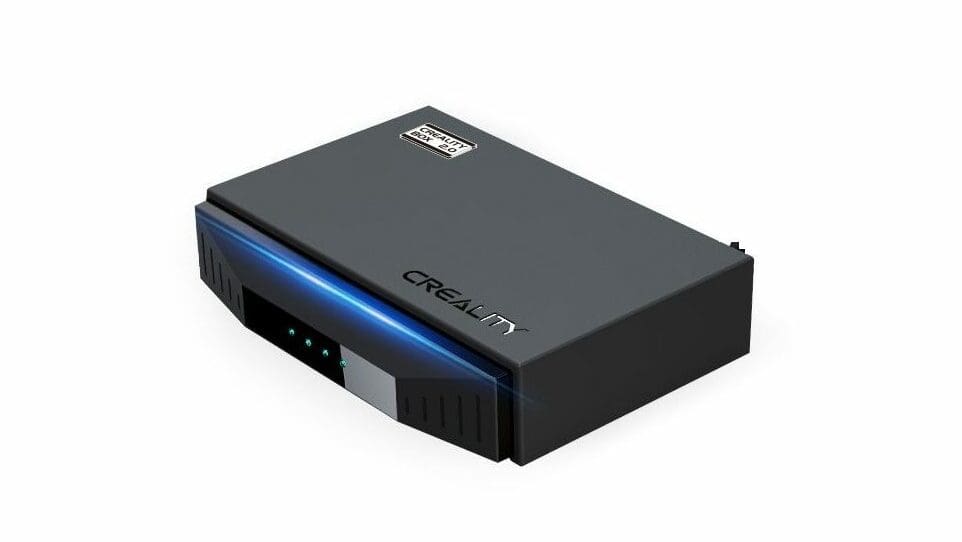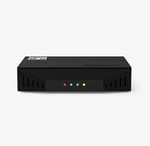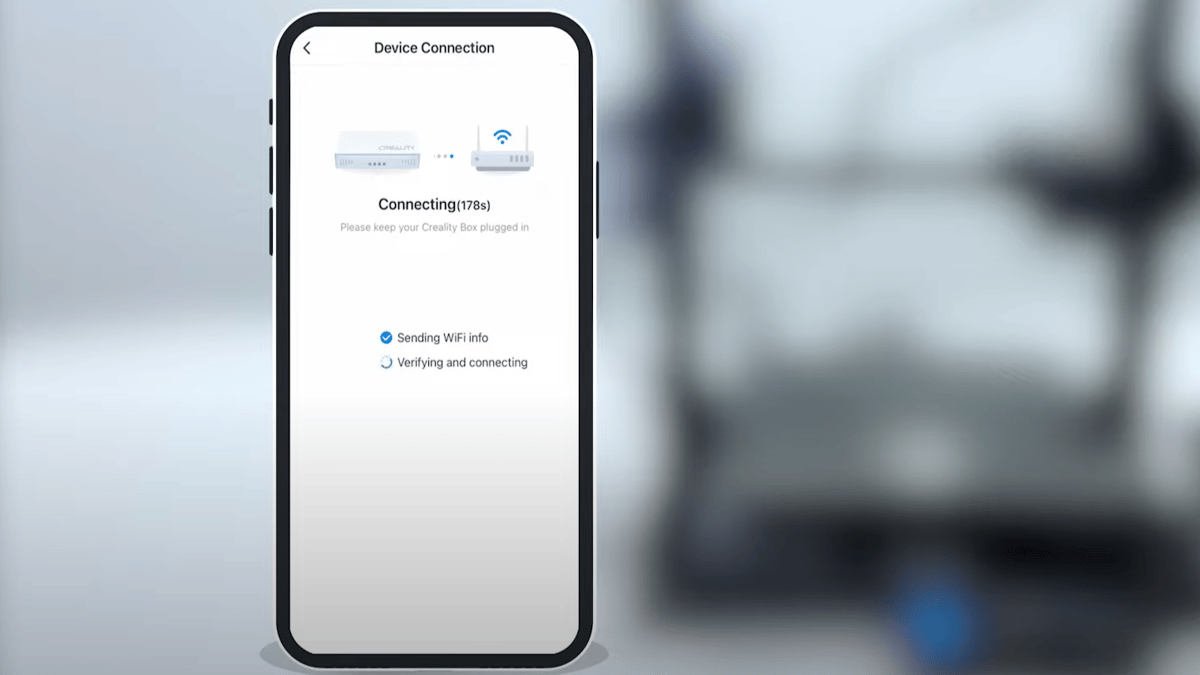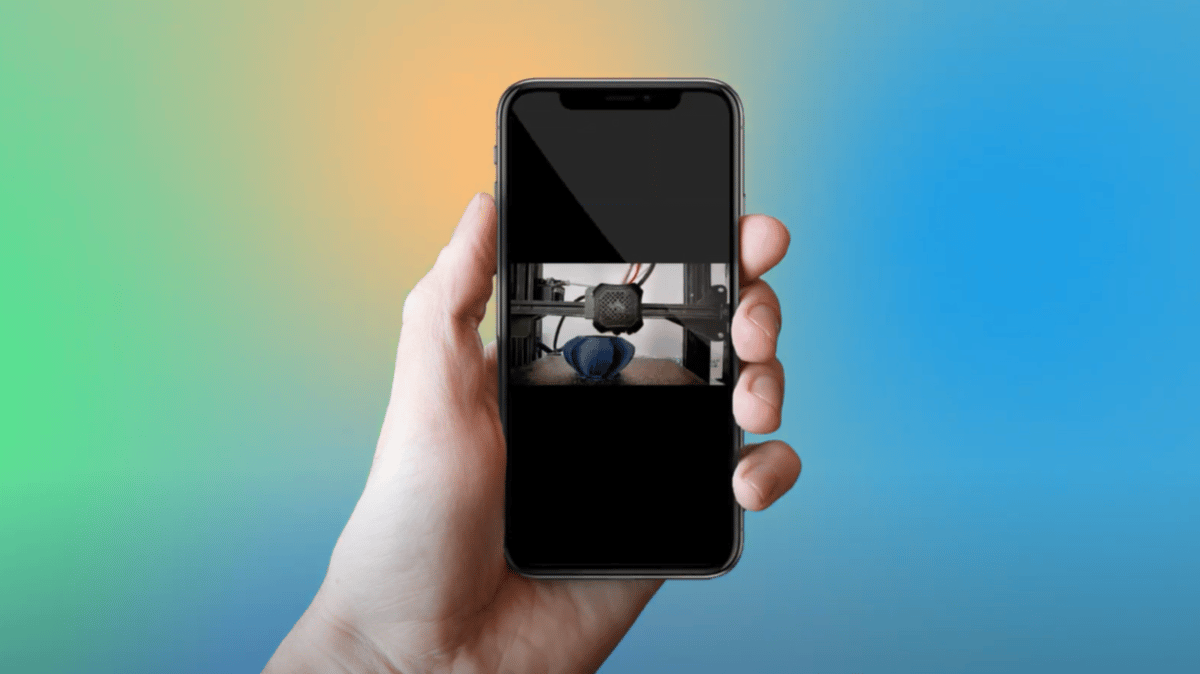Creality is one of the most well-known manufacturers of 3D printers in the world. Their Ender 3 FDM printers are certainly familiar to most 3D printing enthusiasts. However, printers aren’t Creality’s only offering. The company also sells their own remote 3D printing setup in the form of the Creality Box.
Released in 2020, the Creality Box allows users to control their printer remotely, from any part of the world. Initially, the release was welcomed by users and Creality customers. Due to its relatively low cost, it was a no-brainer for most. However, some problematic firmware updates and teething problems caused its popularity to take a hit.
Creality has now relaunched the box with version 2.0, aiming to improve reliability and stability. In this article, we’ll take a tour of the box and see what’s new and improved. Let’s dive in!
Features

Creality Box 2.0 might look like a simple black box, but it packs a punch with some unique features and abilities. In essence, it’s a dedicated Wi-Fi router that’s specifically designed for use with Creality printers. It works by connecting to your Wi-Fi network, then the Creality Cloud app. Once it’s connected to the app, you can slice and send your files directly to your printer, allowing you to print remotely.
One of the best features of the box is the increased control it provides over the printing process. Once you pair it to the app, you can access webcam monitoring, adjust slicer settings like nozzle temperature, and browse the file repository.
In addition, the box and your mobile device don’t need to be connected to the same Wi-Fi network. If you need to head to work or want to step out for an errand or coffee, you can still control your printer after you leave the network the box is connected to.
As for what’s new compared to the original Creality Box, the answer is quite simple: not much. The main addition is the ability to connect via Bluetooth, which does improve versatility. Creality Box 2.0 also comes with updated firmware, aiming to improve the connectivity and operational issues some users experienced with the original box. Other than that, the only visible difference is a white label on the top of the box.
Creality Cloud
As mentioned, the Creality Box acts as a conduit between the printer and the Creality Cloud app. Creality is the first and only company to have created a dedicated app for their 3D printing community. Although it does have its issues from time to time, it’s a useful tool for accessing Creality’s technology and a great resource for users.
The app is basically your remote control panel. It allows you to either upload your own designs for printing or utilize the model library of other designers’ creations.
Once you’ve added or chosen your model file, it’s time to slice the file for printing. The slicer functionality isn’t as advanced as Cura or Creality Print, but it still lets you make basic changes and manipulate the print settings. You can also save print profiles so you don’t have to manually input the settings each time you slice a model.
After slicing your model file, you can send it to the printer. Creality recently added a new step in this process that checks whether your settings match the printer you’re sending them to. This ensures that you’re not setting unattainable parameters for your printer, leading to failed prints or, in some cases, damage to your printer.
After that, it’s just a case of letting your printer do its thing. The app lets you monitor the progress of your print by showing you the time elapsed, the time remaining, and a visual graphic of the printed layers. You can also pause or stop the print entirely, if necessary. Some model files will let you adjust the print speed, temperatures, and fan control mid-print.
If you have a webcam attached, you can also remotely monitor your printer with video. This is particularly useful if you see that the print is starting to fail or cause a safety issue. You can then pause or stop the print and see if it’s possible to rectify the issue. As mentioned, the camera can record time-lapse videos of your prints and save them in the app. You can share these with the app community or on external social media platforms.
There are a number of other useful features in the app, including a community forum, customer support, and an extensive model library. However, since they aren’t directly related to the printing process or Creality Box 2.0, we won’t dive into them here.
Setup

Now that you know a little more about what it does, let’s talk about how to set the box up. It’s relatively simple to set up, and the process should only take a few minutes.
The basic steps are as follows:
- Insert the MicroSD card (FAT32 or exFAT formatted) into the TF Card slot.
- Connect the Micro-USB cable to either of the ports on the box and the appropriate port on the printer.
- Connect the box to a USB power supply, then turn on the box and your printer.
- Connect to the Wi-Fi network. Since this step is more involved and depends on your particular network setup, it may be useful to have a look at a copy of the product manual for troubleshooting tips.
- Download the Creality Cloud app on your mobile device and follow the connection instructions. These can also be found in the manual if you need any help during the process.
With these steps, you should now be ready to start printing with Creality Box 2.0!
Reviews

In general, it would be fair to say that there have been mixed reactions to Creality Box 2.0. There are a couple of positive reviews on the Creality 3D store website, but others, like this recent one at Amazon, are more critical.
The majority of feedback comes from the Creality Cloud Community. Most users express that Creality Box 2.0 is an improvement over the original due to the Bluetooth connectivity, but there have been a lot of teething problems following firmware updates and changes to the app.
Users are experiencing issues, such as not being able to connect the box, sliced files not sending to the printer, the wrong file being printed, or even prints stopping mid-flow. These problems are caused by a combination of both the box and the app malfunctioning.
The good news is that Creality has a reputation for listening to user feedback. As a result, they’re pretty quick to act after an issue is highlighted, and they typically try to resolve it, if possible. This often leads to firmware updates, although these can prove frustrating for users and don’t always immediately fix the problem. There have also been issues with the box becoming bricked, so it won’t function at all. Creality has provided users with instructions to help them resolve this issue.
However, the box and the Creality Cloud app aren’t the only way to control your printer remotely. Let’s have a look at a few alternatives.
Price

The Creality Box 2.0 alone costs about $40, and it includes a Micro-USB power cable and a similar connection cable for the printer. You also have the option of purchasing a kit for around $60 that includes both the box and a webcam. This would allow you to remotely monitor your printer and even record short timelapse videos.
For the box to work, you’ll need a memory card. However, it’s worth noting that the box doesn’t come with a MicroSD or TF card in all countries due to export and import restrictions. If you need to purchase this card separately, a maximum of 16 GB capacity is recommended.
Tech Specs

The technical specifications of the box are as follows:
- Connection to printer: Micro-USB to USB
- Storage: 128-Mb Ddr2, 16-Mb Flash, but memory expansion is via a MircoSD or TF card
- App: Creality Cloud
- App capabilities: Slicing, remote printing, monitoring, time-lapse video
- Ports and slots: RJ45 Network Interface, 2x USB (one for printer, one for camera), Micro-USB, MicroSD/TF card
- Wireless connection: WLAN 802.11 b/g/n 2.4-GHz band, Bluetooth
- Output voltage: 5 V
- Dimensions: 64 x 90 x 20 mm
Similar Devices

Perhaps the most obvious alternative to Creality Box 2.0 is using OctoPrint with an SBC like a Raspberry Pi. OctoPrint is open source and offers a wide variety of plug-ins with different capabilities, so it may be a more versatile option than the box, which is only compatible with Creality 3D printers. However, a Raspberry Pi is more expensive than the Creality Box and requires a high level of expertise to set up, so it might not be suitable for all users.
Creality also produces the Creality Sonic Pad. Essentially, the pad is a wireless version of the printer’s control panel or an alternative to using a smartphone rather than a method of Wi-Fi connectivity. It can work in conjunction with a printer that’s already Wi-Fi enabled or employs the Creality Box 2.0 for connectivity, and it also offers wireless connectivity should you prefer it.
So, it’s not worth considering as a direct alternative to the box but more as a way to better access the remote control aspect. However, the Sonic Pad is a good option if you don’t have a smartphone to use with the Creality Cloud. It’ll provide more functionality and control over your printer than just using the app alone.
It’s also worth taking a look at printers with Wi-Fi connectivity built-in. If you want to stick with Creality, the CR-10 Smart has Wi-Fi integration, as does the Sermoon V1 Pro. Our article on the best budget Wi-Fi 3D printers will give you some other great options to choose from.
License: The text of "Creality Box 2.0: Specs, Price, Release & Reviews" by All3DP is licensed under a Creative Commons Attribution 4.0 International License.
CERTAIN CONTENT THAT APPEARS ON THIS SITE COMES FROM AMAZON. THIS CONTENT IS PROVIDED ‘AS IS’ AND IS SUBJECT TO CHANGE OR REMOVAL AT ANY TIME.


